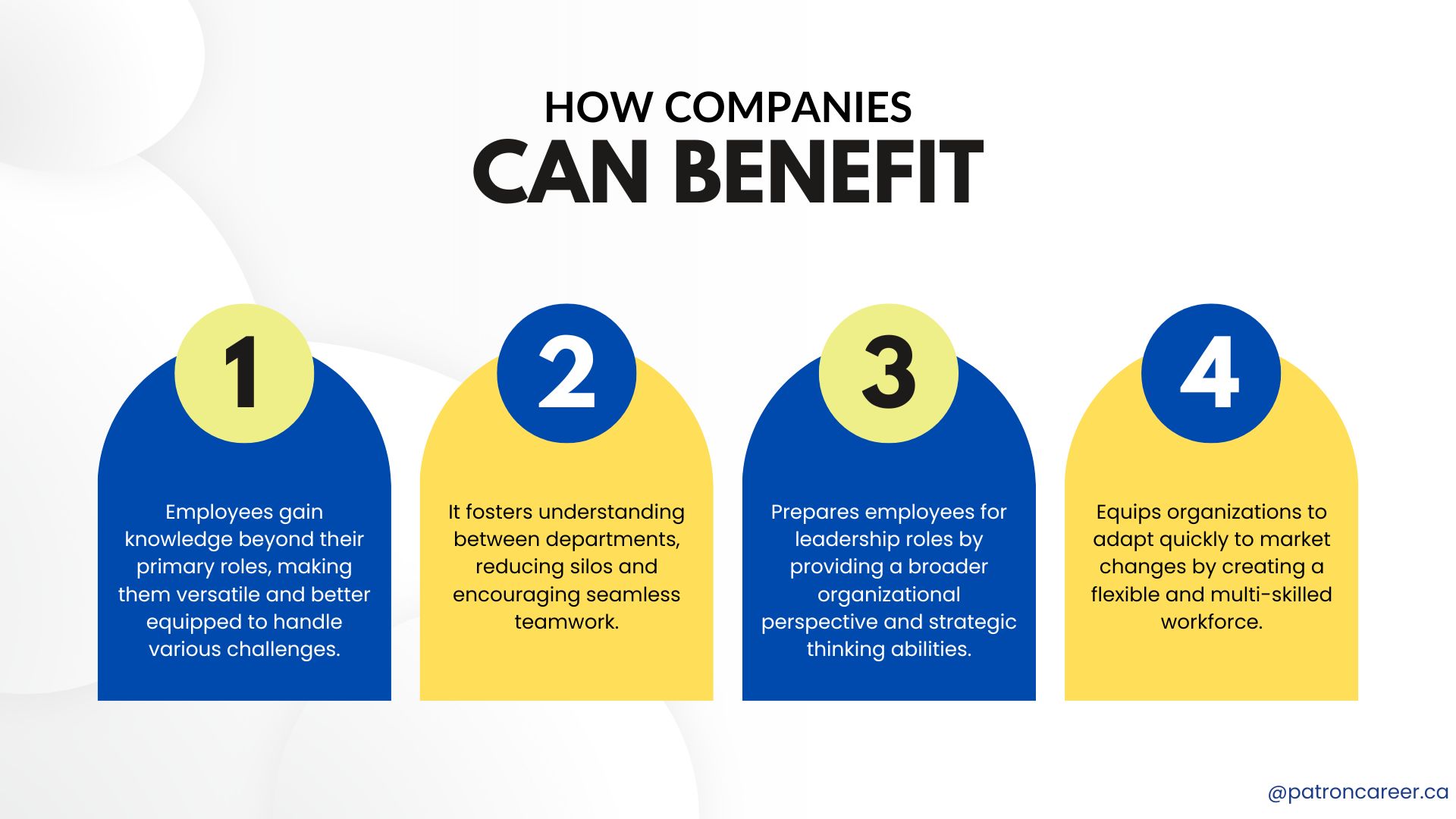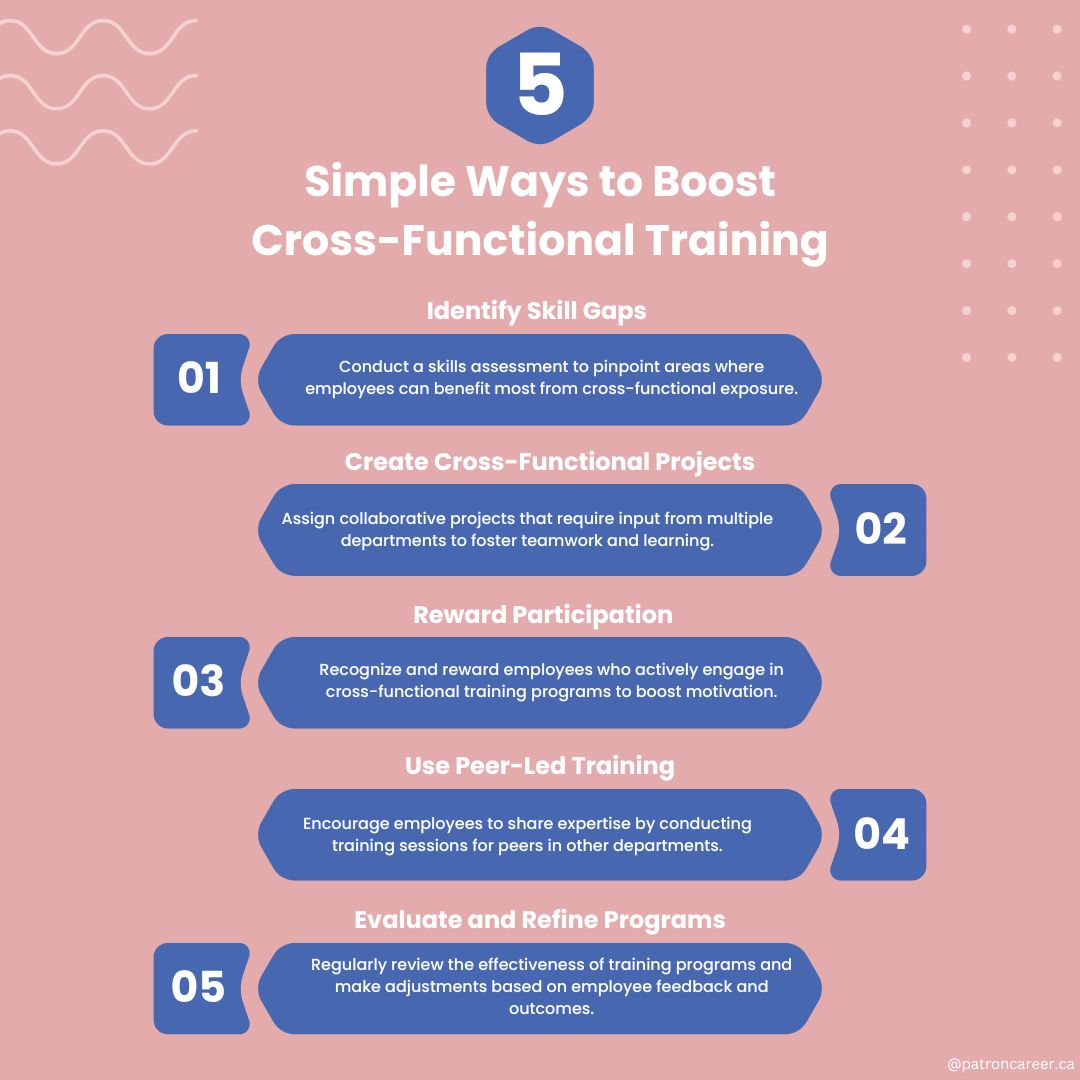Why One Job Role Isn’t Enough Anymore: The Rise of Cross- Functional Training
As an employer, having a workforce that not only excels in their roles but also understands and contributes to the bigger picture of organizational success is a game-changer. Such a versatile workforce in the modern business environment is more than just a bonus---- it’s a necessity.
Cross-functional training is a strategic edge that all organizations need to transform teams and unlock business potential. Businesses that advocate cross-functional training allow employees to acquire skills beyond their primary functions and emerge as business leaders. It is the key to transforming teams, one skill at a time and preparing future-ready teams.
In today’s article, we’ll uncover the immense value of cross-functional training and why it’s a must-have strategy for businesses seeking growth and resilience.
What is Cross-Functional Training?
The goal behind cross-functional training is to build resilient teams, enhance collaboration, and prepare employees for future leadership roles. This method allows businesses to provide employees with learning opportunities outside their primary job functions. It encourages workers to gain knowledge and diverse skill sets in different areas such as across departments.
To cite an example, a marketing specialist might engage in learning key aspects of finance or operations management. It will broaden their expertise, while also improving their ability to contribute to strategic business goals.
Also read: 5 Productivity Prep Tips for the Modern Professional
Benefits of Cross-Functional Training
Let's understand why cross-functional training is essential for employee growth and business agility:
1. Fosters Skill Enhancement and Versatility
A company engaged in diverse operations requires employees who are equipped with versatile skills and are better problem solvers and decision-makers in cross-functional training, employees learn to:
- Develop new competencies, be it technical or soft skills, that are outside their usual roles.
- Adapt to new challenges and changing business needs.
2. Encourages Collaboration Across Teams
Cross-functional training breaks down silos and promotes teamwork and collaboration. Employees can easily engage in interdepartmental communication when they understand the roles and challenges involved with other departments apart from their own. The eventual outcome is a workforce that works cohesively towards shared goals.
3. Prepares Employees for Leadership Roles
When put in the shoes of other employees, the workforce gains a comprehensive outlook on the functionality of the organization. This broad understanding evolves them from task experts to future leaders. It also prepares them by:
- Learning what it takes to develop a strategic mindset.
- Exposing them to decision-making in multiple departments.
- Building confidence to empower, adapt, and lead cross-departmental initiatives.
4. Enhances Business Agility
Canadian employment realm is subject to constant shifts and dynamic changes. Organizations should be agile in facing economic fluctuations, competitive pressures and other challenges. A multifarious workforce can step into critical roles when prompted, and minimize distractions like a pro, thereby improving productivity.
How to Implement Cross-Functional Training in Your Organization
1. Assess Employee Interests and Business Needs
To launch a successful; cross-functional training program, the first step is the most crucial one. It involves studying your business goals and employee aspirations to be at par with what the employees demand. Use surveys and one-on-one interactive sessions to align learning opportunities with employee career aspirations.
2. Start with job shadowing
It involves employees shadowing colleagues in other departments. It increases open communication, and expansion of skill sets and is a low-pressure method to observe workflows, gain insights and build curiosity about other functions. Employers can choose to implement one of the three types of job shadowing at work: observation, regular briefings, and hands-on.
3. Create Rotational Programs
A great way to make learning fun is by making employees switch between roles or departments to build versatile skill niches. The job rotation programs add to an employee’s in-depth knowledge as they get hands-on experience working with colleagues from other departments.
4. Leverage Technology and Online Learning
In a geographically diverse country like Canada, online platforms can make cross- functional training more accessible. Use a learning management system (LMS) to offer virtual courses and certifications in different fields. This way all employees will get access to the rich learning experience, anytime and anywhere.
5. Foster a Culture of Continuous Learning
All endeavours to leverage cross-functional training may come unstuck if it is not made a persistent habit. Create a company culture where employees can draw maximum benefits from engaging in this type of training, making it an important part of their development. Employers can further nourish employee growth through mentorship and continuous feedback.
Challenges of Cross-Functional Training and How to Overcome Them
Cross-functional training has its own set of advantages and challenges. So proactive measures are required to ensure the success of this program.
1. Time Crunch
Employees usually have a lot going on in their day-to-day responsibilities, and dedicating time to training on top of that becomes rigorous.
Solution: A flexible work schedule allows employees to manage routine tasks and prioritize learning as part of their regular work tasks.
2. Resistance to Change
Several employees, especially the aging workforce could see stepping out of their comfort zones with reluctance.
Solution: Educate and communicate to employees about the benefits clearly, accentuating how cross-functional training can accelerate their career growth.
3. Resource Limitations
Not only is time a constraint, but smaller businesses might struggle to allocate resources for extensive training programs.
Solution: Start small with targeted training initiatives, and explore economical online tools.
Real-World Applications of Cross-Functional Training
Cross-functional training initiatives are getting accepted by more companies across Canada to enhance and empower workforce agility.
- Healthcare: Nurses are being cross-trained in administrative functions to support patient care operations.
- Technology: IT employees are being cross-trained in customer support functions to bring alignment between technical and client-facing functions.
- Retail: Sales personnel are being trained in supply chain management to gain a wider understanding of product availability and logistics.
Why Cross-Functional Training is Vital for Canadian Businesses
A lot is changing in the Canadian labour market, prompting businesses to address the challenges of talent shortage storms and remote work dynamics. This is how cross- functional training is all set to tackle these challenges:
- Employees are being prepared ahead of time to fill skills gaps.
- Organizational restructuring made hassle-free with seamless transitions.
- Supporting DEI in the workplace where employees can avail equal growth opportunities.
Final Thoughts: Invest in Cross-Functional Training Today
Cross-functional training is a powerful method for business resilience and employee growth. All organizations, whether big or small can benefit from implementing well-structured cross- training programs and cultivating a dynamic workforce prepared to tackle future challenges.
For employees, it’s a chance to grow personally and professionally and uncover many hidden talents.
Be ready to transform your organization into a more skilled and agile workforce- cross-functional training is the first step towards realizing it!






